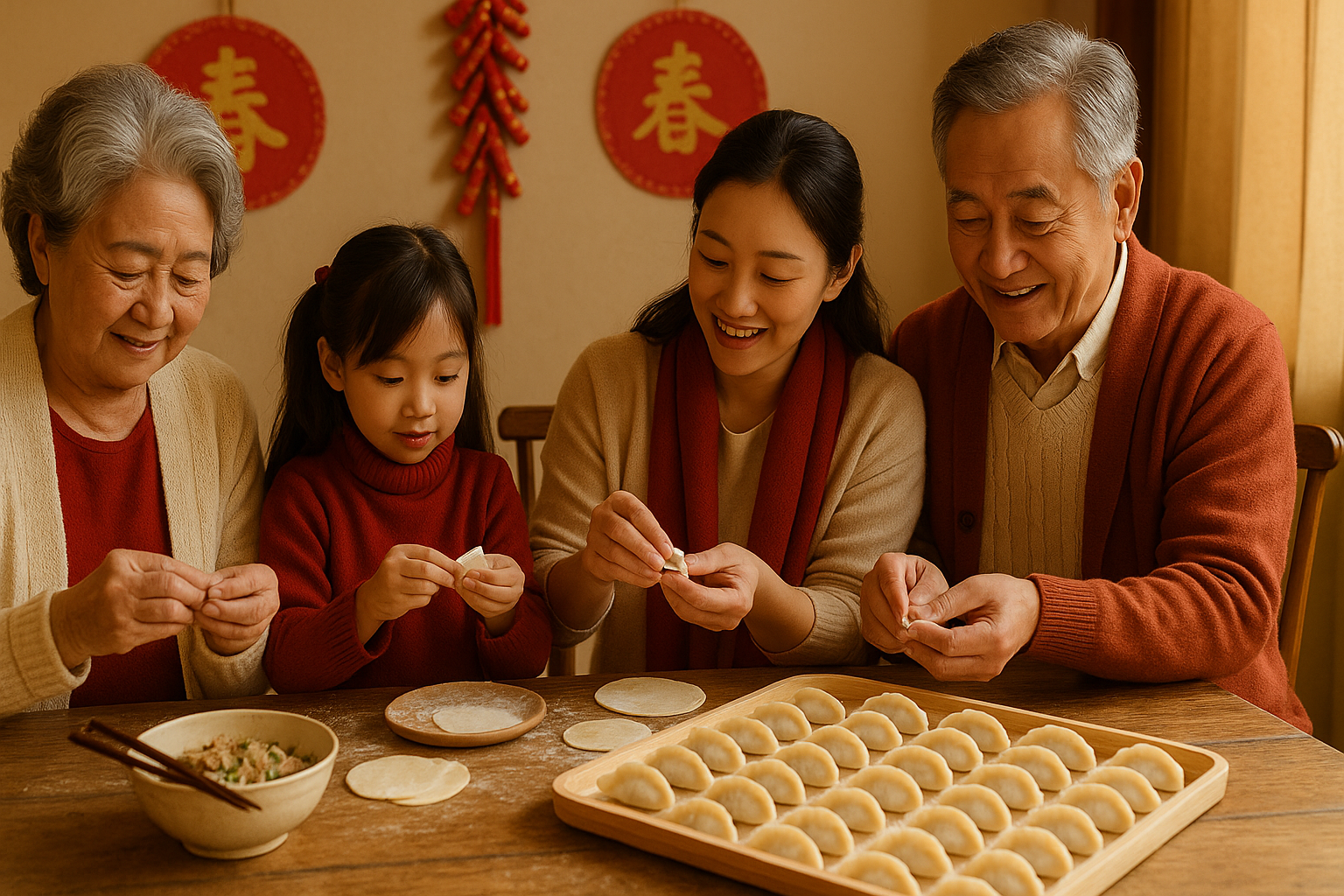Food is at the heart of every celebration, and nowhere is this more true than during Lunar New Year. Families across Asia gather around tables filled with symbolic dishes — each representing prosperity, luck, or happiness. Among them, dumplings hold a special place.
Shaped like ancient Chinese gold ingots, dumplings are more than just a delicious bite. They’re a symbol of wealth, family togetherness, and cultural heritage. This article explores why dumplings are so important during Lunar New Year and how different regions celebrate them.
Dumplings as a Symbol of Wealth
Dumplings are often folded into crescent shapes resembling gold or silver ingots, the currency used in ancient China. Eating dumplings is believed to bring financial fortune in the coming year. Some families even hide a coin inside one dumpling for added luck — whoever finds it is said to receive extra prosperity.
Family and Togetherness
Preparing dumplings is just as meaningful as eating them. Families gather in kitchens, working side by side to fold and seal each dumpling. This ritual represents unity and teamwork, strengthening family bonds during the holiday.
For many, the act of making dumplings together is a cherished childhood memory, passed down from generation to generation.
Regional Variations in Dumpling Traditions
| Region | Tradition |
|---|---|
| Northern China | Dumplings eaten at midnight to welcome the New Year |
| Southern China | More focus on rice cakes, but dumplings still appear at banquets |
| Korea | Rice cake soup (tteokguk) is common, but dumplings (mandu) are also enjoyed |
| Japan | While dumplings are not central, similar dishes like gyoza are popular during gatherings |
Beyond Tradition: Modern Takes
While tradition remains strong, modern Lunar New Year celebrations often blend the old with the new. Today, you might find dumplings filled with creative ingredients such as cheese, seafood, or even dessert-style fillings. Restaurants worldwide also celebrate the festival with dumpling specials, making the tradition accessible far beyond Asia.
FAQs
In Northern China, eating dumplings at midnight marks the transition to a prosperous new year.
It’s a symbol of good fortune. The person who finds it is believed to have extra luck in the year ahead.
Yes, some families make sweet dumplings filled with red bean paste or sesame.
No — while the concept is similar, each region has its own take on dumplings, from Chinese jiaozi to Korean mandu and Japanese gyoza.
It varies by region and tradition, but dumplings are one of the most widely recognized foods of the festival.
Conclusion
Dumplings are more than a festive dish — they’re a cultural symbol tied to family, fortune, and tradition. Whether you’re folding dumplings with loved ones or enjoying them at a Lunar New Year feast, each bite connects you to centuries of history and hope for prosperity in the year ahead.
